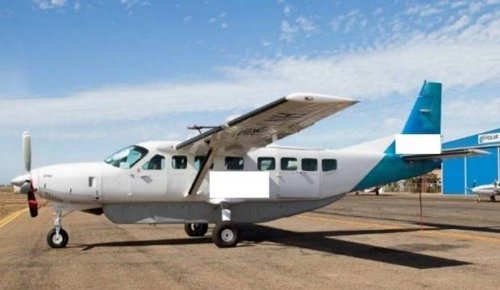Pilot Overflies Destination, Asleep for 40 Minutes (How far away is death?)

A pilot overflies the destination. The pilot — unresponsive to air traffic control calls for 40 minutes — had fallen asleep due to fatigue likely exacerbated by mild hypoxia from the intermittent use of supplemental oxygen.
You may be asking, Why does a pilot fall asleep?
The pilot was conducting a ferry flight of a Cessna 208B Caravan aircraft from Cairns, Queensland, to Redcliffe on the afternoon of July 2, 2020. While cruising at 10,000 feet, the pilot encountered unforecast icing conditions and poor visibility due to cloud and climbed to 11,000 feet and began using the aircraft’s supplemental oxygen system intermittently. (Pilots are required to continuously use supplemental oxygen when flying unpressurized aircraft, such as the Caravan, when flying above 10,000 feet.)
When the aircraft was about 53 km west-north-west of Sunshine Coast Airport, air traffic control (ATC) unsuccessfully attempted to contact the pilot [asleep] regarding the planned descent into Redcliffe, the investigation notes.
Following repeated calls to the pilot, ATC enlisted the assistance of pilots in nearby aircraft to contact the Caravan pilot, who was seen to overfly Redcliffe and track towards Brisbane.
The pilot of a Royal Flying Doctor Service Beechcraft B200 King Air aircraft departing Brisbane was asked by ATC to intercept and contact the Caravan pilot, but their initial efforts were unsuccessful. The King Air pilot then dipped the wings and approached the Cessna in an attempt to trigger its traffic alert and collision system (TCAS), but the pilot remained unresponsive.
At 5:35 pm, after 40 minutes without contact and when the aircraft was about 111 km south-south-east of the intended destination, the pilot woke, realized he had been asleep, and ATC communications were reestablished. The pilot was then instructed to land at Gold Coast Airport, where the aircraft landed safely just after 6 pm.

“The ATSB found that the pilot was likely experiencing a level of fatigue due to inadequate sleep the night before and leading up to the incident,” ATSB Acting Transport Safety Director, Kerri Hughes, said.
“Further, operating at 11,000 feet with intermittent use of supplemental oxygen likely resulted in the pilot experiencing mild hypoxia. This likely exacerbated the pilot’s existing fatigue and contributed to the pilot falling asleep.”
Ms. Hughes said most people generally underestimate their level of fatigue and tend to overestimate their abilities.
“This incident emphasizes the importance of pilots monitoring their own health and wellbeing, to ensure that they are well-rested and adequately nourished, especially when conducting single pilot operations.”
Ms. Hughes said the investigation carefully considered the role of hypoxia in the incident.
“Although a common symptom of hypoxia is loss of consciousness, it is not typical for someone experiencing hypoxia to regain consciousness, while still operating at the same altitude and without additional oxygen,” she said.
“Therefore, from the information obtained by a medical specialist engaged by the ATSB and from studies conducted on mild hypoxia at moderate altitudes, the ATSB determined that it was unlikely that the pilot had lost consciousness solely due to mild hypoxia.
“Rather, the pilot had fallen asleep likely due to a combination of fatigue and mild hypoxia, possibly exacerbated by dehydration and diet.”
Lessons learned
- Fatigue was likely exacerbated by mild hypoxia, contributing to the pilot falling asleep;
- Pilots need to monitor their health and wellbeing to ensure they are well rested before flight;
- Continuous use of supplemental oxygen is required when flying above 10,000 ft in unpressurised aircraft.
Read the full ATSB (Australian Transport Safety Bureau) report: AO-2020-32: Pilot incapacitation involving Cessna 208B, VH-DQP, 53 km west-north-west of Sunshine Coast Airport, Queensland, on 2 July 2020.
Register today for a TapRooT® Root Cause Analysis Training Course
TapRooT® training is global to meet your needs. If you need particular times or locations, please see our full selection of courses.
If you would like us to teach a course at your workplace, please reach out to discuss what we can do for you, or call us at 865.539.2139.
Stay engaged with your skills and training: Follow along on our blog; join our Wednesday TapRooT® TV videos at 12 pm EST; connect with us on Facebook, Twitter, Instagram, Pinterest, LinkedIn, and YouTube.



